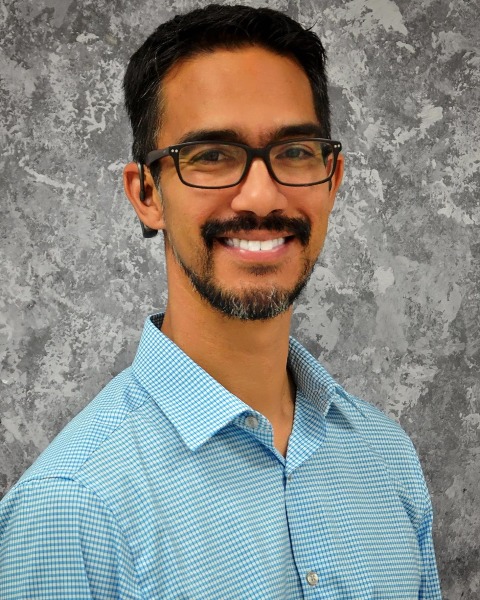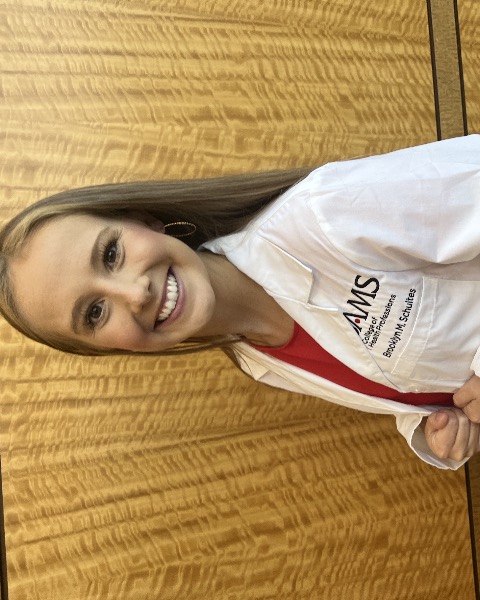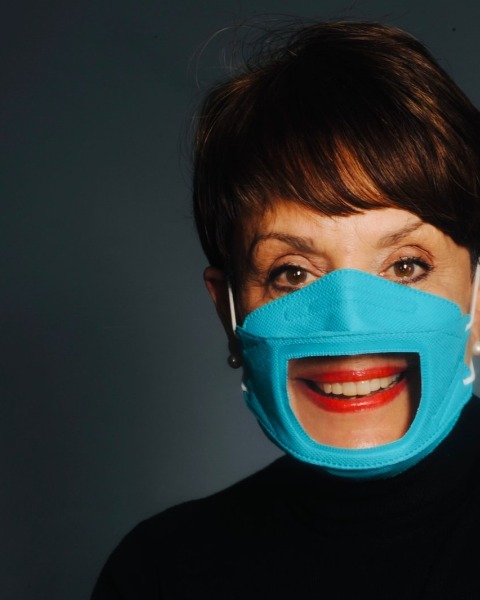Practice Management (PM)
PP1201 - Communication, Usability, and Fit of Transparent and Non-Transparent N95 Masks

Samuel R. Atcherson, PhD (he/him/his)
Professor, Audiology
University of Arkansas for Medical Sciences
University of Arkansas for Medical Sciences
Little Rock, ArkansasDisclosure(s): National Institutes of Health and Small Business Technology Transfer: Grant/Research Support (Ongoing); Plural Publishing, Inc: Royalties (Ongoing); Thieme Medical Publishers: Royalties (Ongoing); University of Arkansas for Medical Sciences: Employment (Ongoing)
- AP
Aayushi S. Patel, research assistant (she/her/hers)
research assistant
NIH grant
Little Rock, ArkansasDisclosure(s): I am a graduate research assistant employed under grant funding from the National Institutes of Health: Employment (Ongoing)

Brooklyn Schultes, Research Assistant (she/her/hers)
Univeristy of Arkansas for Medical Sciences
Little Rock, ArkansasDisclosure(s): National Institutes of Health and Small Business Technology Transfer: Research Grant (includes principal investigator, collaborator or consultant and pending grants as well as grants already received) (Ongoing); University of Arkansas for Medical Sciences: Research Grant (includes principal investigator, collaborator or consultant and pending grants as well as grants already received) (Ongoing)

Jeanne Hahne, MSN, RN (she/her/hers)
CEO
FaceView Mask
Medford, OregonDisclosure(s): FaceView Mask, LLC: Research Grant (includes principal investigator, collaborator or consultant and pending grants as well as grants already received) (Ongoing), Stockholder/Ownership Interest (excluding diversified mutual funds) (Ongoing)
- BD
Barbara DeBaun, MSN RN CIC (she/her/hers)
Improvement Adcisor
Cynosure Health
San Francisco, CaliforniaDisclosure(s): Faceview: Research Grant (includes principal investigator, collaborator or consultant and pending grants as well as grants already received) (Ongoing)
Lead Presenter(s)
Presenter(s)
The surgical mask is an essential item of personal protective equipment, preventing the transmission of infectious agents such as bacteria and viruses, but conventional surgical masks can muffle speech and prevent patients and healthcare workers with hearing difficulties from being able to lip read. The purpose of this study was to complete communication, usability, and fitment evaluations comparing a conventional, opaque N95 mask with a new transparent mask intended to meet N95 standards that both prevents infectious disease transmission and improves communication among healthcare personnel and patients with and without hearing impairment.
Summary:
Approximately 4% of people in the US are either deaf or hard of hearing1, equating to more than 13 million people. Of these, approximately 12 million people over the age of 5 years have difficulty hearing normal conversation even when using a hearing aid1. Hearing difficulties affect all age groups and present significant challenges in daily life. These challenges are particularly acute in healthcare settings, where miscommunication results in suboptimal treatment and can lead to serious and potentially life-threatening outcomes for patients2. Errors in interpersonal communication are an important contributing factor in medical errors, and the wearing of surgical masks by healthcare personnel and patients increases the likelihood of miscommunication. The surgical mask is an essential item of personal protective equipment, preventing the transmission of infectious agents such as bacteria and viruses, but conventional surgical masks can muffle speech and prevent patients and healthcare workers with hearing difficulties from being able to lip read3,4. Lip reading is an important visual aid to communication for everyone but is particularly important for those who are deaf or hard of hearing5-10. Our goal is to complete the development of a transparent surgical N95 respirator mask that prevents infectious disease transmission and improves communication among healthcare personnel and patients with hearing impairment.
This NIH Small Business Technology Transfer (STTR) funded study (#1R41NR017124-01) has a minimum of 125 participants with diverse employment roles, hearing levels, and communication modalities undergoing fitment testing (standard taste test) with the conventional N95 mask and a new transparent mask that will be undergoing the FDA approval process to be categorized as an N95 mask. The goal of this study is to have participants evaluate usability, fit, cost, function, communication, and preferences for the two masks. Data will be completed by February 15th and results presented in the aggregate using descriptive statistics will inform the inventor, manufacturer, and FDA review process in addition to increasing awareness of transparent mask options that are likely to remain in use in many healthcare settings.
1. Mitchell, R. E. The Journal of Deaf Studies and Deaf Education 11, 112-119.
2. Henn, P., OʼTuathaigh, C., Keegan, D. & Smith, S. (2017). Journal of Patient Safety, 10.1097/PTS.0000000000000298.
3. Mendel, L. L., Gardino, J. A. & Atcherson, S. R. Journal of the American Academy of Audiology 19, 686-695 (2008).
4. Goldin, A., Weinstein, B. & Shiman, N. (2020). The Hearing Review.
5. Jaekl, P., Pesquita, A., Alsius, A., Munhall, K. & Soto-Faraco, S. (2015). Neuropsychologia 75, 402-410.
6. Sumby, W. H. & Pollack, I. (1954). The Journal of the Acoustical Society of America 26, 212-215.
7. Grant, K. W., Walden, B. E. & Seitz, P. F. (2018). The Journal of the Acoustical Society of America 103, 2677-2690.
8. Grant, K. W., Tufts, J. B. & Greenberg, S. (2007). 121, 1164-1176.
9. Jerger, S., Damian, M. F., Tye-Murray, N. & Abdi, H. (2014). Journal of Experimental Child Psychology 126, 295-312.
10. Thomas, S. M. & Jordan, T. R. (2004). Journal of Experimental Psychology: Human Perception and Performance 30, 873.
Learning Objectives:
- Upon completing, participants will be able to describe potential benefits of a new transparent mask for both the prevention of the spread of diseases and improving visual communication access.
